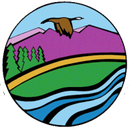-
Event: Coos Land Conservation discussion
Coos Land Easements/Land Trust Discussion What does conservation in Coos County mean to you? Are you interested in conserving land? If you believe it is important to conserve land in Coos then please mark your calendars for Saturday January 15th, 1:00pm - 2:30pm for a discussion on the importance of land conservation in Coos County. Location of this meeting is to be determined at this time. A zoom option will be offered as well. (Originally the
-
Native Plant Nursery
Native Plant Nursery The District's Native Plant Nursery, is a continually growing project. Our native plants, once established, will be available to local, state and private agencies working on conservation, erosion control projects. We need your help - We have started some plants, grasses, willows, etc. However, we are looking for input, which species work best for you, and what would you like to see available locally for these projects, please let us know. You can send
-
-
Tree Seedlings for Coös Kids
30 Years Strong For well over 30 years Coös K-12 kids have received seedlings. This year thanks to Coös County Conservation District and Lancaster Scouts, the event was not canceled due to Covid-19. However, it was done a bit differently. Because Natural Resource volunteers were not able to visit classrooms as they typically would, BSA Troop 219 from Lancaster, and Cub Scouts from pack 219 packaged over 2000 seedling so they could be redistributed to schools
-
Wood Ash Spreader
Recent purchase available for rent The recent purchase of a Wood Ash Spreader has also proven to be a great success with our local farmers. Just in the short time we have owned it, several local farmers have benefited from the availability of the spreader to get wood ash and lime on their fields to improve soil quality and group yields. Comments from a few of our farmers that have used it and their pictures: “I used
-
NoTill Drill Demonstration
Demonstration event The Coos Country Conservation District hosted a demonstration in Columbia last Wednesday of a 10-foot Great Plains No Till Drill 1006NT, pulled by Scott Deblois so participants could see it in action. About No-till farming practices keep the soil structure intact-enabling it to absorb more water and handle heavy rain as well as decreases erosion and supports trillions of microbes in the soil. (Jake Mardin photo) A no-till drill similar to the one used here is available
-
Soil Health Initiative
Soil Health Workshop Farmers interested in learning more about ways to improve the productivity of your soil should visit the NH Soil Health website Producers interested in cover crops should sign up by March 15, you will be put on a contact list to receive updated information about cover crop trials, seed mixes, dates. No-Till Corn Planter Rentals and Retrofits equipment availability, click here for more information and signup. We’ve Got It Covered! Already using cover crops? This
-
Conservation Field Day
February, 2021 Each year the District holds a Conservation Field Day for the 5th graders from the local valley schools. This Field Day has been occurring for multiple decades with the help from local professionals in NH Fish & Game, UNH Extension, USDA/NRCS, local foresters and farmers, and volunteers. Students are able to learn about crops and agriculture, safety on the farm, what animals can be raised, the soil horizons, timber harvesting, and what fish/macro invertebrates are
-
Janauary 2021 Flashback
Flashback! Each month, we will be providing Flashbacks of the great work that the Conservation District in Coos County has completed over the years. However for the January Newsletter we wanted to highlight a special event in history! Soil Conservation in 1937 On February 27, 1937 Franklin D. Roosevelt sent a letter to all state governors urging the passage of state legislation to create a soil conservation district program. The reason for this program was due to the
-
Erosion Control Field Day
Training opportunity Training for professionals working in soils, erosion control, water quality, public works, engineering, roads, planning, consulting, and septic designers & installers. Topics for the day were: Erosion Prevention & Sediment Control on Small Construction Sites Hydraulically Applied Erosion Control Three Dimensional Slope Stabilization Project Review Proper Culvert Installation & Maintenance Soil Amendments Underground Storm Water Storage Perimeter Sediment Control Shoreline Stabilization Using Gabion Baskets Pollinator Habitats, Native Plant Species, Invasive Species Continuing Education Credits, available for
-
Streambank Restoration Project
Recent Activity A several of these projects have been overseen and completed by NRCS. The District helped secure funding for a portion these projects. A before and after picture of a couple of these projects. These projects are designed to preserve agriculture lands but stabilizing stream banks and to restore & preserve natural wildlife habitats.
0
- No products in the cart.















